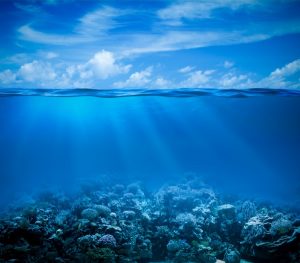A new underwater hyperspectral camera has been deployed on Remotely Operated Vehicles (ROV) for a more automated identification, mapping and monitoring of the sea floor around the world.
ROV’s – remotely operated vehicles – they are widely used by the offshore oil and gas sector and other industries, and are being developed for deep-sea mining.
AUV – autonomous underwater vehicle – technology has progressed rapidly in recent years. They play a major role in oceanographic research.
There are two methods used to capture images beyond the visible wavelengths. One is multispectral imaging which involves spectral bands of varying bandwidths, not necessarily contiguous, but with up to 10 bands strategically selected. The other, hyperspectral imaging involves narrow, usually contiguous spectral bands, involving possibly hundreds or thousands of spectra.
Recently a team at the Australian Institute of Marine Science (AIMS) deployed an underwater robot carrying a hyperspectral camera to allow for greater monitoring of the Great Barrier Reef.
The AIMS technology development and engineering team spent two weeks at sea testing an ROV called the Blue ROV2 which is equipped with semi-autonomous navigation capabilities. Melanie Olsen, AIMS Technology Transformation leader, and her team put a hyperspectral camera onto the ROV, which features a dive capability of 100m.
The hyperspectral camera used on Blue ROV2 operates in the 400 to 1000 nm spectral range. The camera features a 640 x 480 CMOS image sensor with a 7.4 µm pixel size that achieves frame rates up to 250 fps. In addition, the camera features onboard data processing and storage, and has 640 spatial bands and 270 spectral bands. It comes equipped with a 17 mm lens, and a storage capacity of 480GB.
Because of the ability to capture more than 270 bands of color information, the hyperspectral camera enabled the ROV to survey the reef in more detail, including mapping the ocean floor, depth of the water, and helped to identify bleached corals.
While the use of the hyperspectral camera may be relatively new, underwater robots have been exploring our oceans and gathering data for quite some time. First developed in the 1950’s ROV’s were used mainly in military operations.
Back in 2009, the first ROV, or glider, to cross the ocean was an 8-foot underwater glider named the Scarlet Knight which traveled from New Jersey to Spain, tracing the 517-year-old path of Columbus’s ship, the Pinta. The mission of this underwater expedition provided data to help scientists better understand how climate change is affecting the ocean.
More recently, underwater robots exploring off the coast of Oman discovered the largest dead zone in the world, covering at least the size of Scotland, and possibly more.
According to Dr. Bastien Queste, “Our research shows that the situation is actually worse than feared – and that the area of dead zone is vast and growing. The ocean is suffocating.”
Other projects to explore and understand the ocean depths are underway in Hawaii as well. Two AUV’s work together to gather samples of microbial life, while the other tests the salinity and temperature of the water. Microbes in the ocean control elemental cycles and form the basis of the food chain. Generally speaking, they are very important in the ocean.
Whether you are developing a hyperspectral camera for use in ocean exploration, or developing ‘eyes’ for such vehicles as an ROV or an AUV, employing Universe Optics is the premier choice in the engineering and manufacturing of the precision lens you require.
“Studying the ocean is like studying Mars, or Jupiter,” says Jim Birch, who manages the environmental sample processor at Monterey Bay Aquarium Research Institute. “We can go out into it a little bit more often, but it is a harsh, harsh environment, and sending robots out that can stay for a long period of time relative to what we do now, is a huge leap. This is going to transform oceanography.”